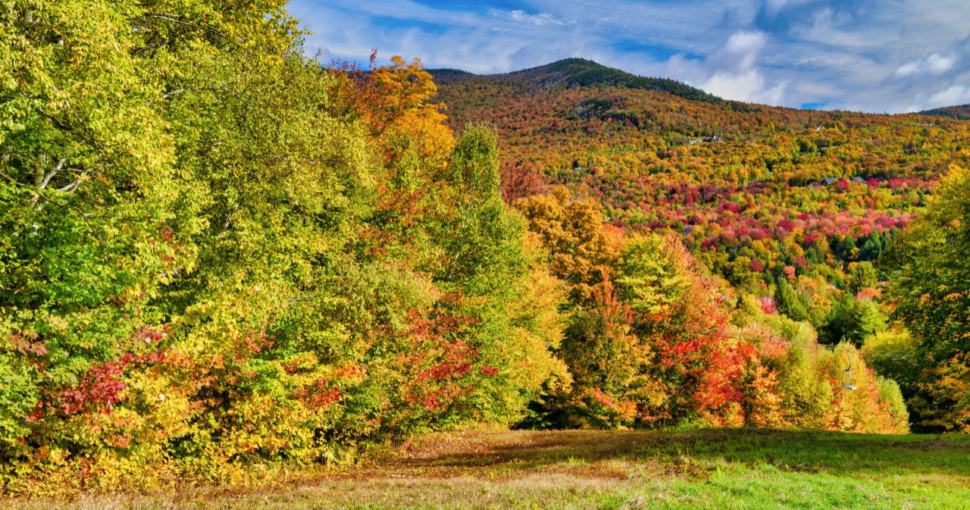The trees of New England are some of the most beautiful in the world. From maples to sycamores, here are the most common types of trees found in this region. You can use this list as a reference for your garden or to identify trees in New England.
Contents
- 1. Sugar Maple (acer saccharum)
- 2. Black Gum (eucalyptus ovata)
- 3. Eastern Hophornbeam (ostrya virginiana)
- 4. American Sycamore (platanus occidentalis)
- 5. Balsam Poplar (populus balsamifera)
- 6. Eastern Cottonwood (populus deltoides)
- 7. Bigtooth Aspen (populus grandidentata)
- 8. Pin Cherry (prunus pensylvanica)
- 9. Black Locust (robinia pseudoacacia)
- 10. American Basswood (tilia americana)
- 11. American Elm (ulmus americana)
- 12. Red Pine (pinus resinosa)
- 13. Balsam Fir (abies balsamea)
- 14. Paper Birch (betula papyrifera)
- 15. Red Spruce (picea rubens)
- 16. Low Bush Blueberry (vaccinium angustifolium)
- 17. Korean Fir (abies koreana)
- 18. Nootka Cypress (Chamaecyparis nootkatensis ‘Pendula’)
- 19. White Fringetree (chionanthus virginicus)
- 20. Kousa Dogwood (cornus kousa)
- 21. Cornelian Cherry (cornus mas)
- 22. Northern Whitecedar (thuja occidentalis)
- 23. White Ash (fraxinus americana)
- 24. American Plum (prunus americana)
- 25. American Chestnut (castanea dentata)
- 26. Common Hackberry (celtis occidentalis)
- 27. Dotted Hawthorn (crataegus chrysocarpa)
- 28. Bitternut Hickory (carya cordiformis)
- 29. Downy Serviceberry (amelanchier arborea)
- 30. Butternut (juglans cinerea)
If you are a gardener in New England, chances are that you will come across at least one of these trees. This blog post will serve as an introduction to the most common trees found in New England and their characteristics.
New England is a region in the northeastern United States, bordered by Canada to the north and west, New York to the south and east, and Atlantic Ocean on its eastern coast. It consists of the states of Maine, New Hampshire, Vermont, Massachusetts, Rhode Island and Connecticut as well as several islands such as Nantucket and Martha’s Vineyard.
The trees listed below are those that naturally grow in this region or those native to North America. Also included are those commercially cultivated species that have become invasive in the region.
1. Sugar Maple (acer saccharum)
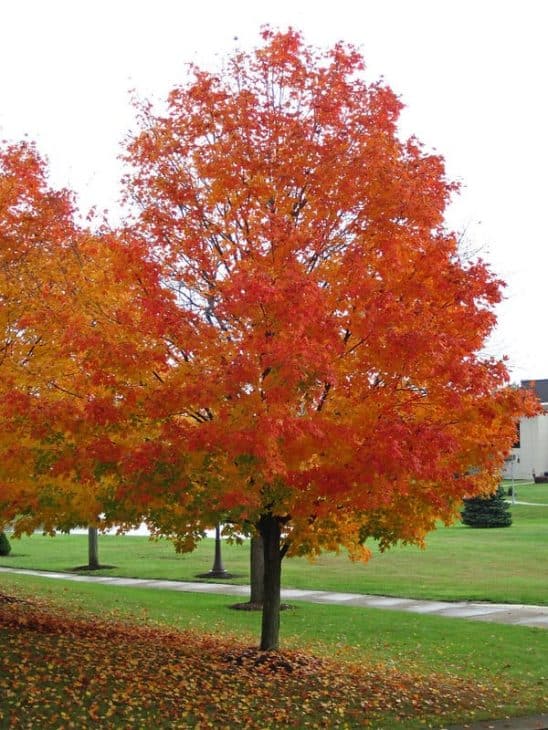
The Sugar Maple is one of the most common trees in New England. It produces a brilliant display of fall colors and can grow to be 100 feet tall and over 40 inches in diameter.
The bark on young trees is smooth, greenish-bronze and later reddish-brown with shallow fissures; the trunk is slender with a narrow crown when grown in the open. The leaves are 3-5 lobed, thin and papery in texture, dull green on top and lighter underneath; when young, they resemble those of silver maple but gradually become more deeply lobed.
2. Black Gum (eucalyptus ovata)
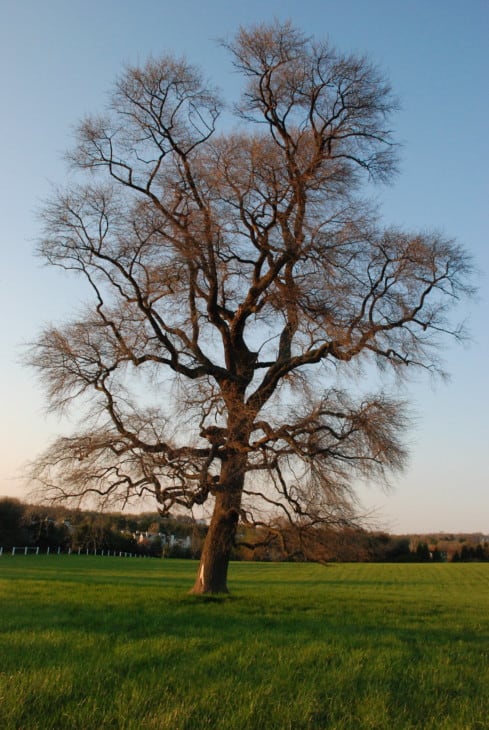
The Black Gum is also known as the Sour Gum, Red Gum, Pepperidge Tree and Water Tupelo. Black Gum is common in the New England region, as well as in the states of Pennsylvania, Tennessee and North Carolina.
The bark is usually dark grey or reddish-brown with long narrow strips; older trees are typically 50 feet tall with a pyramidal shape when grown in the open. Leaves are alternate, simple in shape and almost triangular with a pointed tip; younger leaves are green and shiny while mature leaves turn yellow in autumn before falling.
3. Eastern Hophornbeam (ostrya virginiana)
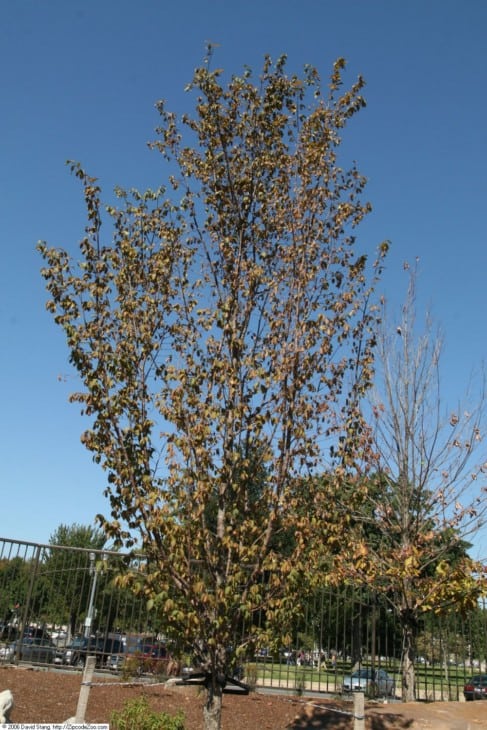
The Eastern Hophornbeam is also known as American Hophornbeam, Ironwood and Blue Beech. Besides New England it is also prevalent in states such as Kansas and
The bark of young trees is reddish-green with conspicuous lenticels (raised dots) which become scaly on older trunks; the leaves are alternate and somewhat triangular in shape with 5 to 9 veins radiating from each point.
It is quite easy to confuse this species with the Hop Hornbeam (Ostrya virginiana) but it has larger leaves. The American Hophornbeam can reach 70 feet tall and 18 inches in diameter at breast height; its crown is broad, pyramidal or rounded when grown in the open.
4. American Sycamore (platanus occidentalis)
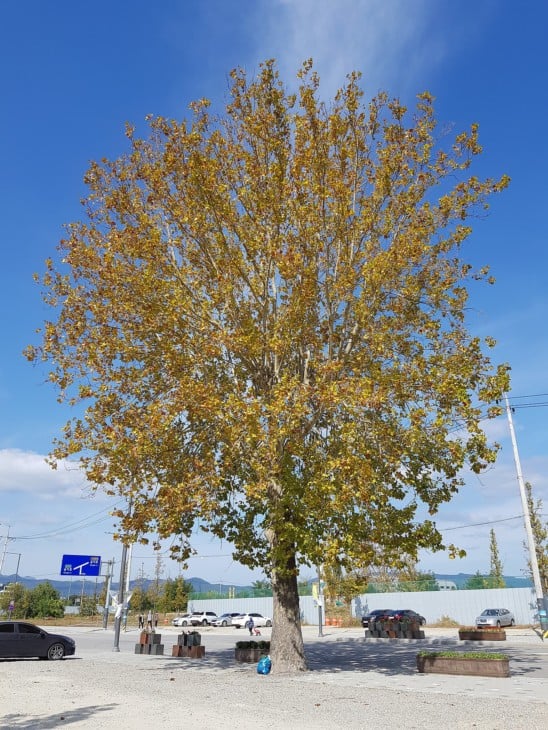
The American Sycamore is a large tree with a broad, rounded crown and wide-spreading branches.
Its bark is light brown to gray, deeply furrowed into scaly ridges; its leaves are simple in shape and heart-shaped on young trees, changing to deeply lobed as they mature. The leaves of older trees are 3-5 inches wide, with 5-7 lobes on each side.
5. Balsam Poplar (populus balsamifera)
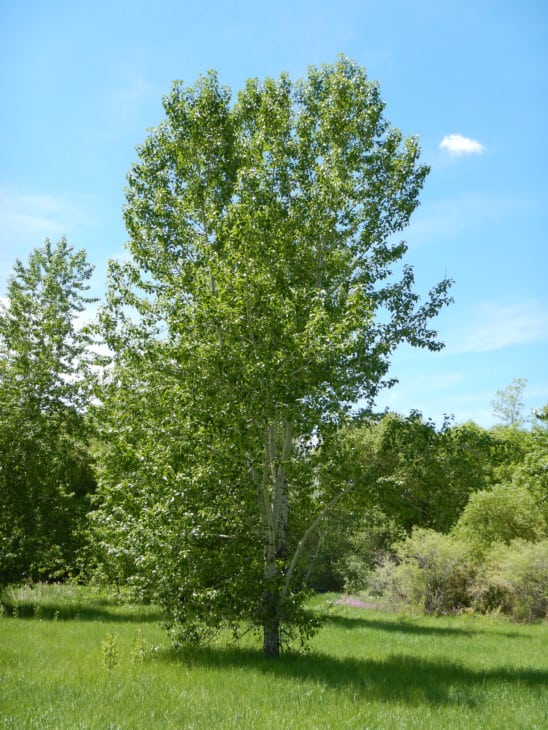
The Balsam Poplar is also known as the Canadian Poplar, Balm-of-Gilead, Tacamahac or Aspen Tree.
It is a large deciduous tree that can reach 150 feet in height and 60 inches in diameter, with smooth gray bark. The balsam poplar is one of the earliest trees to shed its leaves in the fall. It has simple, heart-shaped leaves that are 2-5 inches long and 1-4 inches wide.
6. Eastern Cottonwood (populus deltoides)
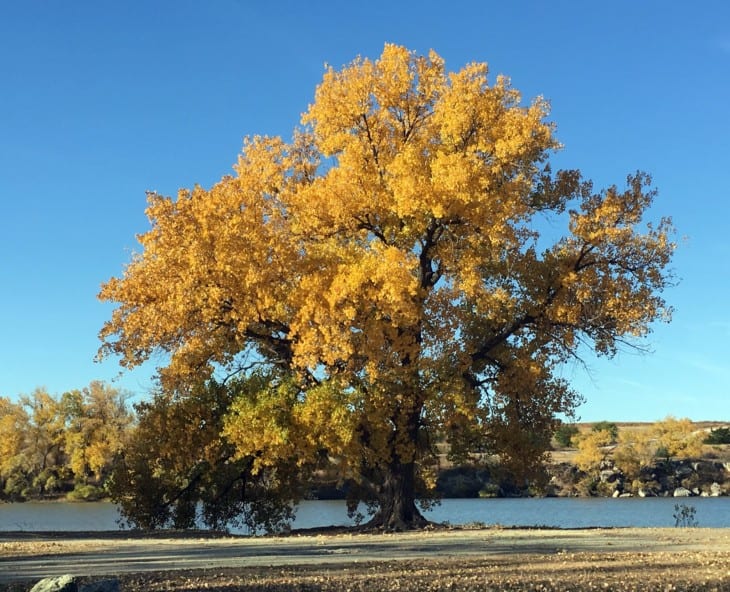
The Eastern Cottonwood is also known as the Carolina Poplar, Swamp Cottonwood or White Poplar.
It is typically found in moist soils along waterways; it can reach 100 feet in height and 1 foot in diameter, forming dense clumps where it often grows in colonies. The bark of young trees is thin, greenish-brown to gray and finely shreddy; the leaves are alternate and heart-shaped.
7. Bigtooth Aspen (populus grandidentata)
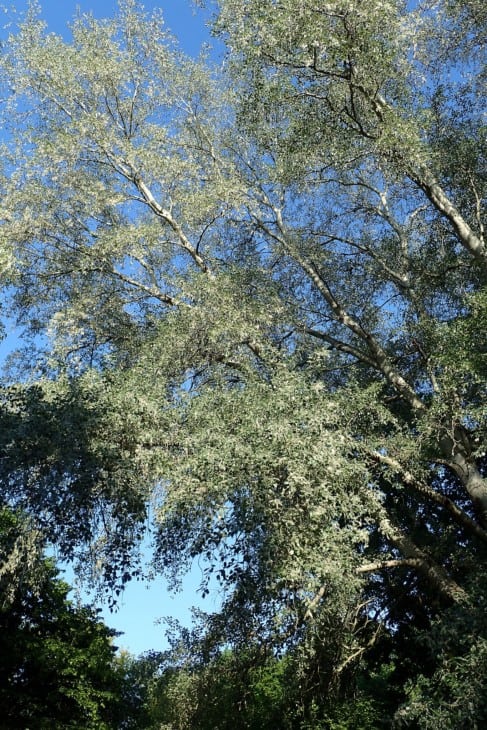
The Bigtooth Aspen is a deciduous tree with a broadly rounded crown and smooth, gray bark.
It can grow to be 100 feet tall and 4.5 inches in diameter, with light green leaves that turn yellow in autumn before they fall. The bark is smooth on young trees with thin scales, becoming dark gray and deeply furrowed on older trunks.
8. Pin Cherry (prunus pensylvanica)
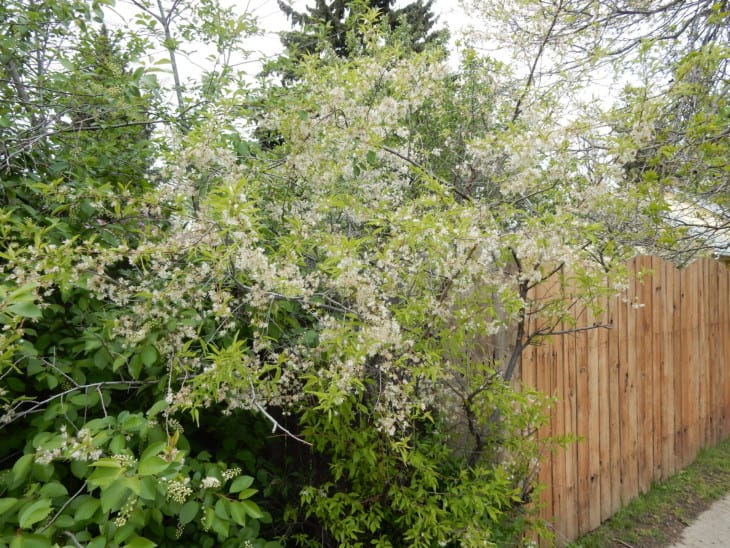
The Pin Cherry is also known as the Fire Cherry, Wild Red Cherry and Mooseberry.
It is a small tree reaching only 30-50 feet in height and 14 inches in diameter; it typically forms thickets that reproduce through root sprouts. The bark on young trees is smooth and gray with shallow fissures that become deeper with age.
9. Black Locust (robinia pseudoacacia)
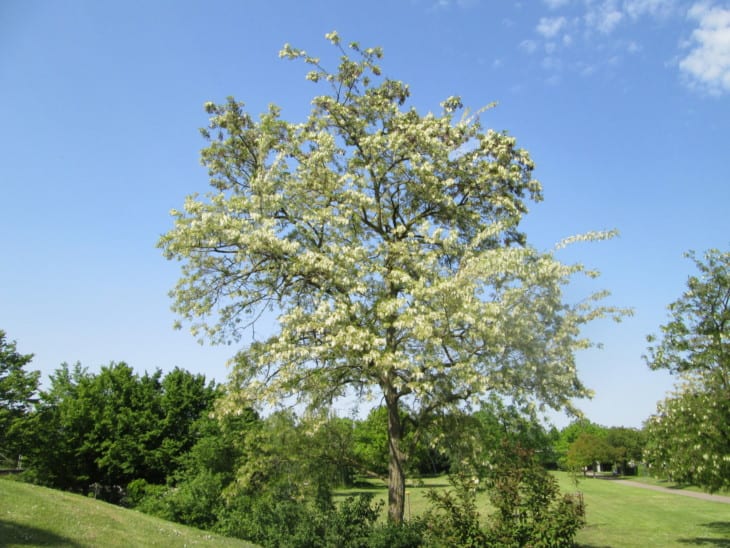
The Black Locust is also known as the False Acacia, Yellowwood, Whitewood and Catclaw.
It is a moderate-sized tree that grows up to 50 feet tall with an open crown; it can sprout back vigorously after being cut or damaged by fire.
Buds are pale green at first but turn brown as they mature; leaves are alternate, pinnately compound with as many as 12 pairs of leaflets.
10. American Basswood (tilia americana)
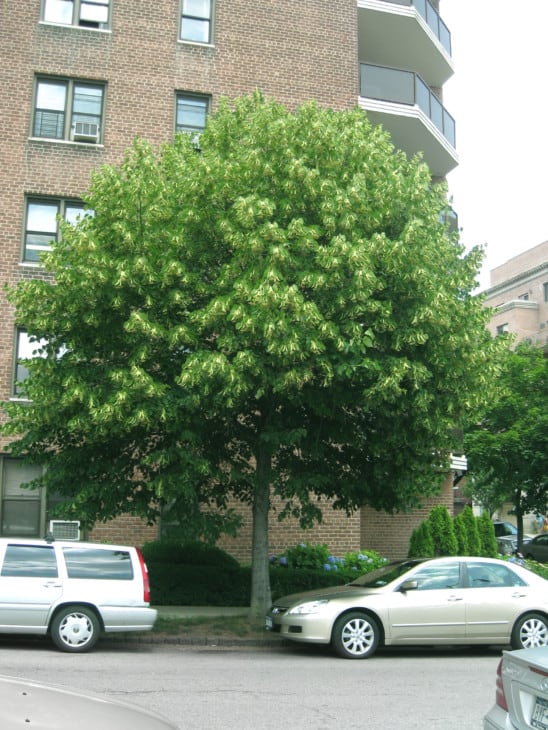
The American Basswood is also known as the American Linden, Bee-tree and Bass-wood.
It is a large tree with dense heart-shaped leaves that turn yellow in autumn before they fall. The bark on older trunks is dark gray with deep furrows and flat ridges of lighter gray; buds are reddish green, turning brown with age.
The leaves are alternate, simple and heart-shaped; they are 2-5 inches long, smooth on top with dense hairs underneath. They are quite fragrant when bruised or crushed.
11. American Elm (ulmus americana)
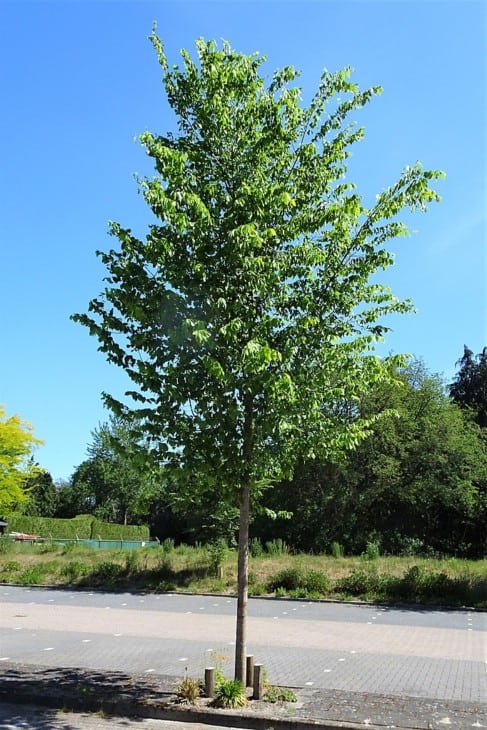
The American Elm is also known as White Elm, Water Elm and Slippery Elm. It is a tall tree that can reach 90 feet in height and 2 feet in diameter.
Bark on young trees is smooth and gray with shallow furrows; bark on older trunks is dark gray with deep ridges and flat scaly plates.
Leaves are simple and arranged alternately; they are 2-6 inches long, with deeply double-toothed margins.
12. Red Pine (pinus resinosa)
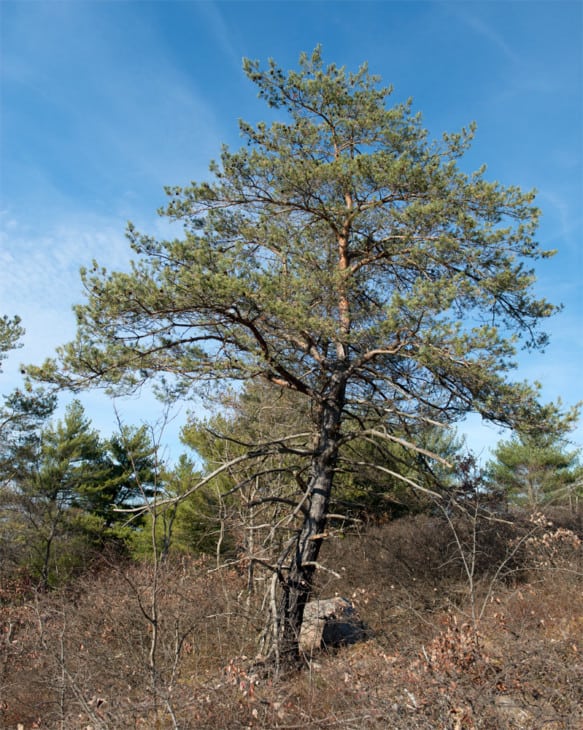
The Red Pine is also known as the Norway Pine, Scotch Pine and Eastern White Pine.
It is a large evergreen tree with open crown; it can reach heights of 50-100 feet and 1-2 feet in diameter. The bark on young trees is smooth, gray to yellowish brown; older trunks are dark gray with deep furrows and flat-plate scales that shed in narrow strips.
Leaves are arranged spirally and on long, slender shoots; they can grow to be 4-8 inches long and 1/2 inch wide with pointed tips. They are dark green with resinous edges and blunt tips, turning yellow before they fall during autumn or winter.
13. Balsam Fir (abies balsamea)
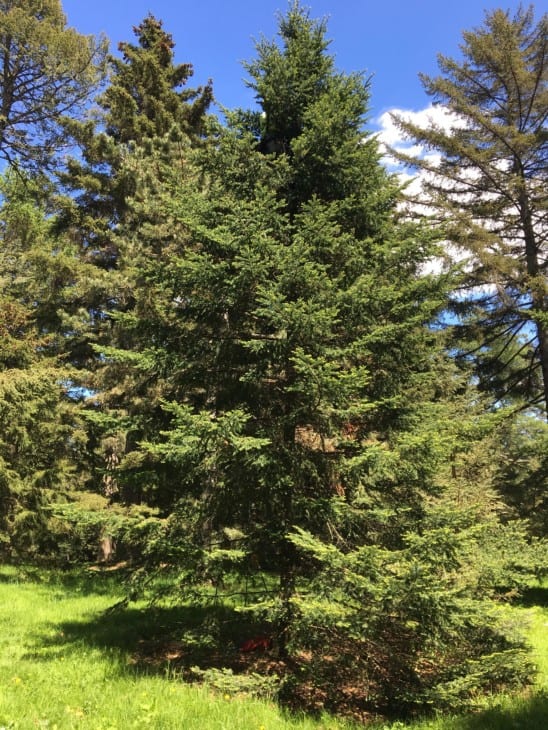
The Balsam Fir is also known as Eastern Fir, American Abies and Black Abies.
It is a coniferous evergreen tree with a cone-shaped crown; it can reach heights of 70-130 feet and 1-2 feet in diameter. The bark on young trunks is smooth, gray to blue green; older trunks are dark gray with shallow furrows and narrow, flat-plate scales that shed in small patches.
Leaves are arranged spirally like rays around the twig; they can grow up to 6 inches long and 1/4 inch wide; their outer surfaces are bright green while their undersides are shiny with pale resin glands.
14. Paper Birch (betula papyrifera)
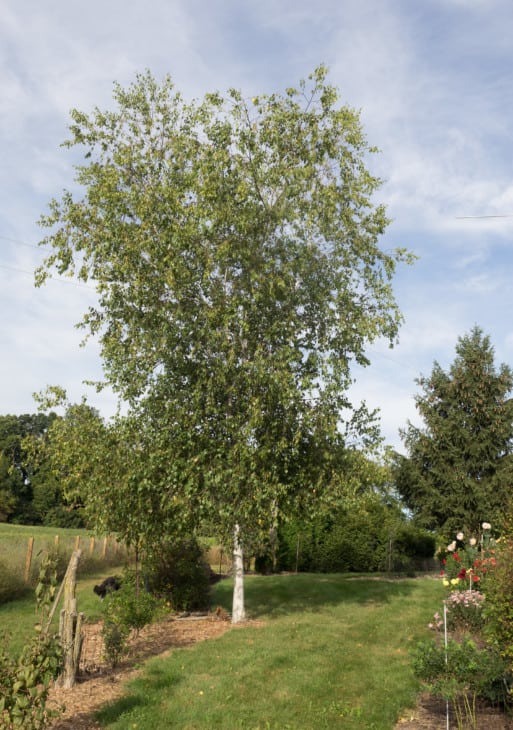
The Paper Birch is also known as White Birch, Canoe Birch and Silver Birch.
It is a medium-sized tree with a round crown; it can reach 30-40 feet in height and 1.5 feet in diameter. Young bark is smooth and gray to reddish brown; older trunks become dark gray with narrow, flat plates that have small black plate-like scales.
Leaves are alternate, simple and ovate with pointed tips; they grow up to 4 inches long and 1.5 inch wide, turning yellow before they fall during autumn or early winter.
15. Red Spruce (picea rubens)
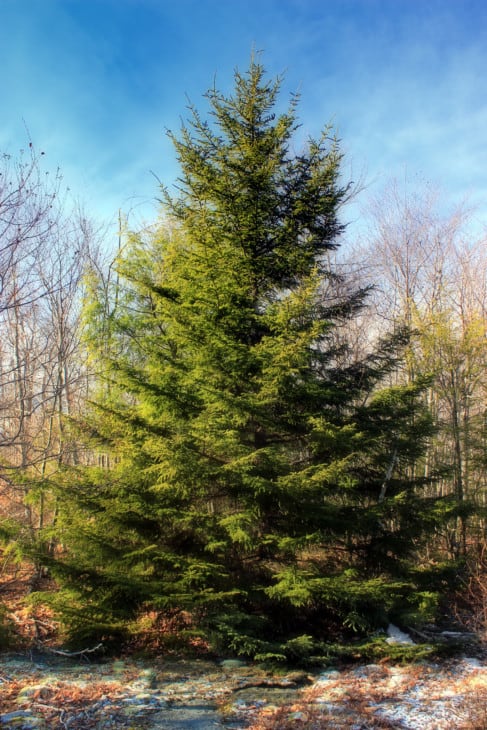
The Red Spruce is also known as Black Spruce, Cow Spruce and Swamp Spruce. It is a medium-sized coniferous evergreen tree with a narrow pyramidal crown; it can reach heights of 50-70 feet and 1 foot in diameter.
Buds are dark to light brown in color, turning gray to rust-orange with age; twigs are stout and greenish brown, turning gray to reddish brown as they mature.
Leaves are alternate, scale-like leaves that grow up to an inch long. They are pointed at the tip with rounded edges; their upper surfaces are green while their undersides are white with pale resin glands.
16. Low Bush Blueberry (vaccinium angustifolium)
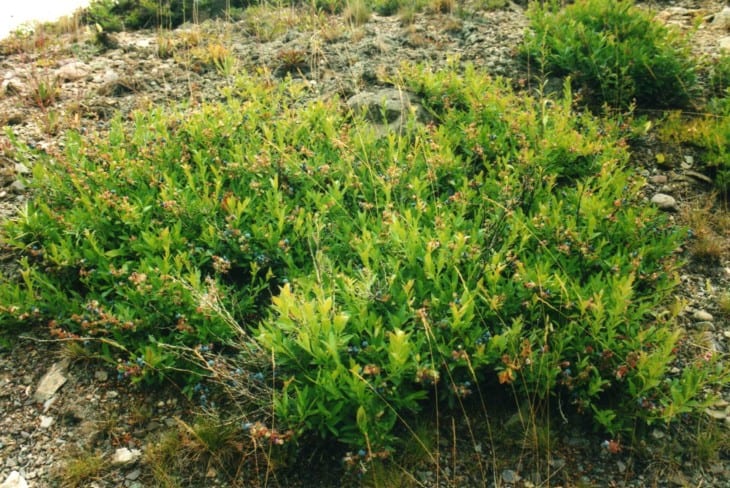
The Low Bush Blueberry is also known as Swamp Huckleberry and Mooseberry. It is a small deciduous shrub with gray bark and thin, gray-green twigs; it can reach 1-2 feet in height and spread up to 10 feet across.
Leaves are simple and alternate, growing up to 1 inch long and 1/2 inch wide; they are dull green on the upper surface and pale with dense hairs underneath.
Flowers appear in clusters of 3-5 at the end of stems; each flower has 5 petals that form a bell shape with a small tube inside. They range in color from white to pink or purple. Flowers give way to small, sour red berries that are edible.
17. Korean Fir (abies koreana)
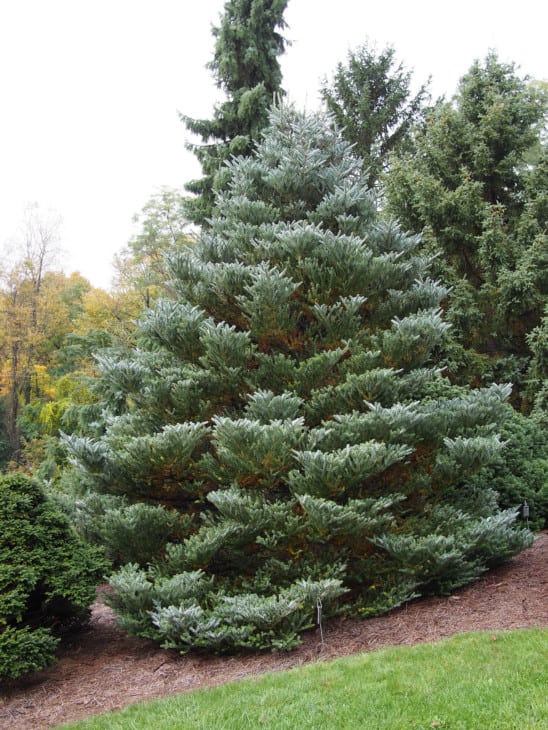
The Korean Fir is also known as the Nootka Fir and Western North American Fir.
It is a coniferous evergeen tree with a narrow pyramidal crown; it can reach heights of 60-100 feet and 1 foot in diameter. Young bark is smooth, gray to yellowish brown; older trunks have dark gray bark with deep, wide furrows and narrow, flat-plate scales that are shed in small patches.
Leaves are needle-like, flattened to the branchlets so they appear oriented at right angles to it; they can be up to 3 inches long and 1/8 inch wide. They are dark green on top with two white bands underneath; they are sharp-pointed at the tip.
18. Nootka Cypress (Chamaecyparis nootkatensis ‘Pendula’)
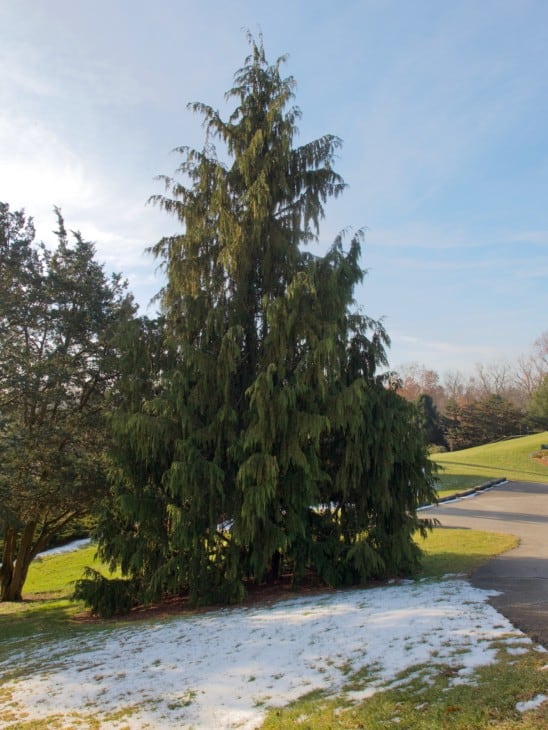
The Nootka Cypress is also known as Alaska Cedar, Yellow Cedar and Alaska Cypress.
It is a coniferous evergreen tree with an oval crown; it can reach heights of 100-160 feet tall and 3-4 feet in diameter. Young bark is grayish brown with flat ridges that become finely scaly on older bark; bark on the lower trunk is deeply furrowed.
Leaves are scale-like, arranged in two rows on either side of twigs; they are less than 1/4 inch long and yellowish green in color. Fruits are small cones that range from light brown to gray when mature.
19. White Fringetree (chionanthus virginicus)
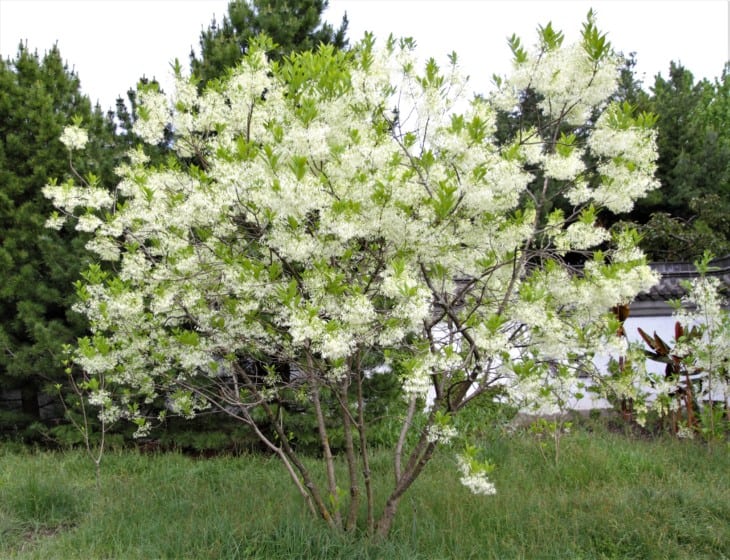
The White Fringetree is also known as Old Man’s Beard, Fringe Tree and Dwarf Fringetree.
It is a small tree with fine texture; it can grow up to 20 feet tall with an equal spread. It has smooth gray bark on young stems that becomes scaly with age; the canopy is rounded when young but becomes more open with age.
Leaves are alternate, simple and oblong; they can grow up to 3 inches long and 1 inch wide, changing from green to white as they mature. Flowers appear in clusters of 3-5 at the end of stems; each flower has 5 petals that appear fringy or threadlike due to glandular hairs that fringe each petal. They are white in color with yellow stamens.
20. Kousa Dogwood (cornus kousa)
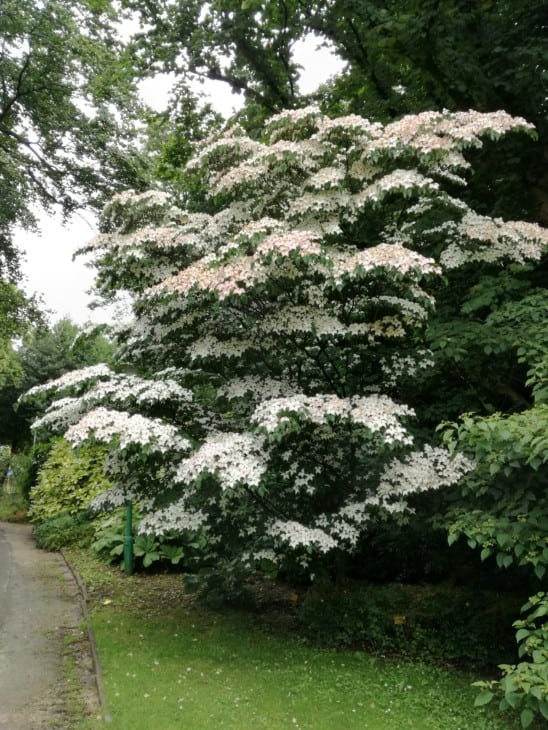
The Kousa Dogwood is also known as the Chinese Dogwood and Asian Deciduous Dogwood. It is a small deciduous tree with a rounded canopy; it can reach heights of 20-25 feet tall and 15 feet wide. Bark on young stems is light green, turning reddish brown as it matures; older bark becomes dark gray and deeply furrowed.
Leaves are simple, alternate and elliptical in shape; they can grow up to 3 inches long and 1 inch wide, turning bright red to orange or yellow in the fall before dropping off. Flowers appear in clusters of 4-8 at the end of stems; each flower has 5 petals that are white in color with a yellow center. Fruits are spherical to oblong in shape and turn bright red when mature.
21. Cornelian Cherry (cornus mas)

The Cornelian Cherry is also known as the European Cornel or Dogberry Tree. It is a medium-sized deciduous tree with a rounded, spreading crown; it can reach heights of 25-30 feet and 15 feet wide at maturity. Bark on young stems is smooth and grayish green that becomes dark brown and divided into irregular plates with maturity.
Leaves are simple, alternate and ovate in shape; they can grow up to 3 inches long and 1 inch wide, turning bright red to scarlet or yellow before dropping off in the fall. Flowers appear in clusters of 4-7 at the end of stems; each flower has 5 petals that are white to pinkish in color. Fruits are blue to black in color, turning brown when ripe.
22. Northern Whitecedar (thuja occidentalis)
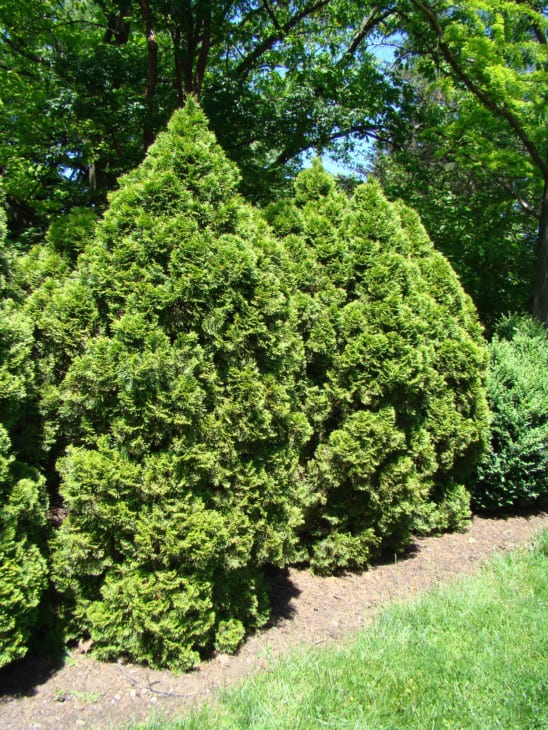
The Northern Whitecedar is also known as Arborvitae, Whitecedar and Eastern Arborvitae. It is a coniferous evergreen tree with an upright crown; it can reach heights of 40-50 feet tall and wide at maturity. Young bark is reddish brown to red in color, aging to gray or light brown with age.
Leaves are scale-like, arranged in two rows on either side of twigs; they can be up to 1/4 inch long with a waxy blue-green color. Fruits are small cones that range from light brown to gray when mature.
23. White Ash (fraxinus americana)
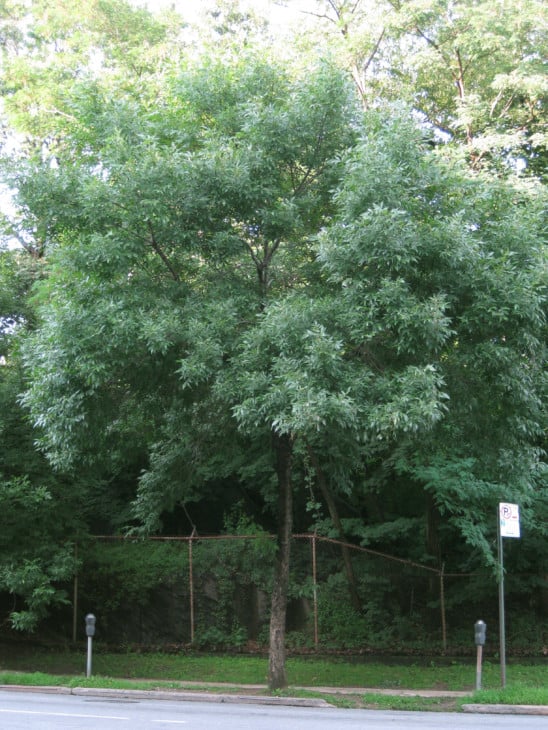
The White Ash is also known as American Ash and Water Ash. It is a large deciduous tree with a rounded crown; it can reach heights of 80-100 feet tall with a canopy that spreads 50 feet wide at maturity. Bark on young stems is light green to silvery gray, turning dark brown and divided into scaly plates with maturity.
Leaves are simple, alternate and oblong to lance-shaped in shape; they can grow up to 4 inches long and 1 inch wide, turning yellow to red before dropping off in the fall. Flowers appear in clusters of 2-5 at the end of stems; each flower has a small scale that is greenish white in color. Fruits are small winged seeds that turn brown when ripe.
24. American Plum (prunus americana)
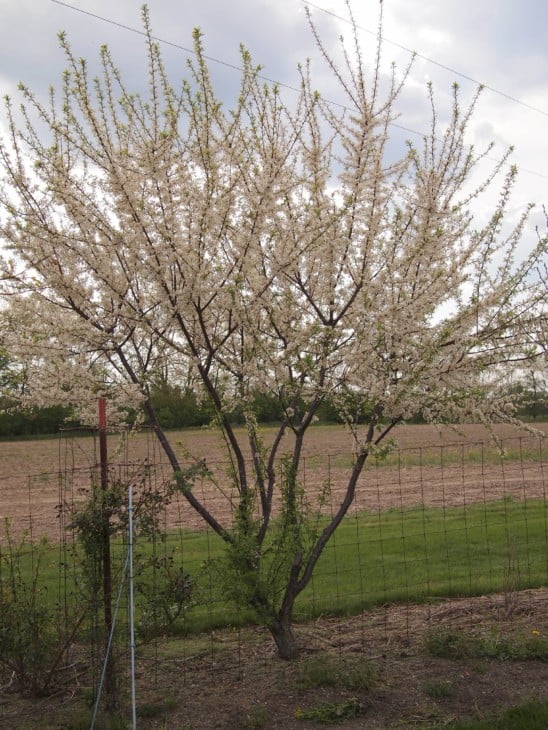
The American Plum is also known as Wild Plum and Beach Plum. It is a small deciduous tree with a rounded crown; it can reach heights of 20-30 feet tall and wide at maturity. Bark on young stems is smooth and gray in color, becoming scaly and dark gray to brown with age.
Leaves are simple, alternate and oval to lance-shaped in shape; they can grow up to 2 inches long and 1 inch wide, turning rich scarlet to purple before dropping off in the fall. Flowers appear in clusters of 2-5 at the end of stems; each flower has 5 petals that are white to pinkish in color with a yellow center.
25. American Chestnut (castanea dentata)
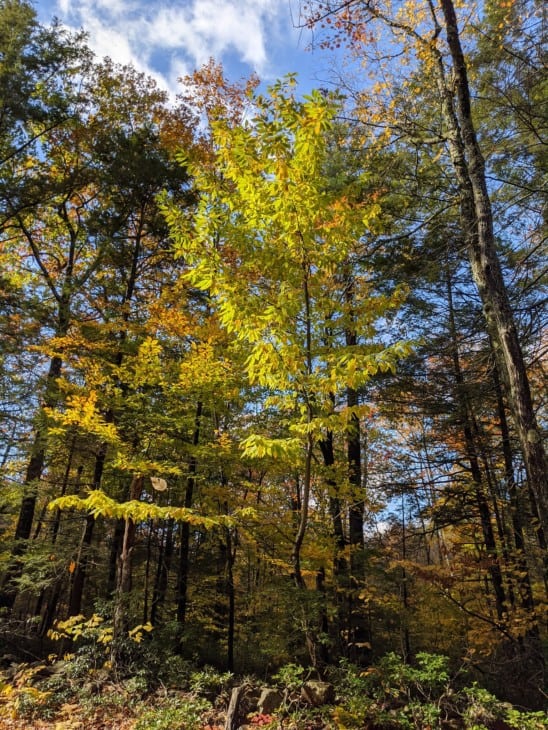
The American Chestnut is also known as the American Chinkapin, Meadow Chestnut and Water Chestnut. It is a medium-sized deciduous tree with an irregular crown; it can reach heights of 40-60 feet tall at maturity. Bark on young stems is smooth and greenish brown in color, becoming gray or light brown with age.
Leaves are simple, alternate and oval in shape; they can grow up to 4 inches long and 1 inch wide, turning scarlet to purple before dropping off in the fall. Flowers appear in clusters of 2-5 at the end of stems; each flower has 5 petals that are purplish white in color with a yellow center.
26. Common Hackberry (celtis occidentalis)
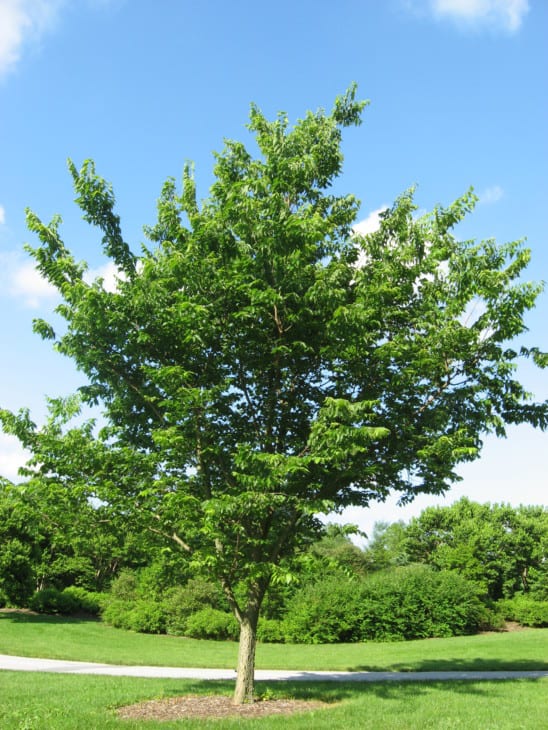
The Common Hackberry is also known as American Hackberry and Sugar Berry. It is a medium-sized deciduous tree with irregular branches; it can reach heights of 30-40 feet tall and 20 feet wide at maturity. Bark on young stems is smooth, gray to greenish brown in color, becoming dark gray or light brown with age.
Leaves are simple, alternate and oblong in shape; they can grow up to 2 1/2 inches long and 3/4 inch wide, turning red to purple before dropping off in the fall.
27. Dotted Hawthorn (crataegus chrysocarpa)
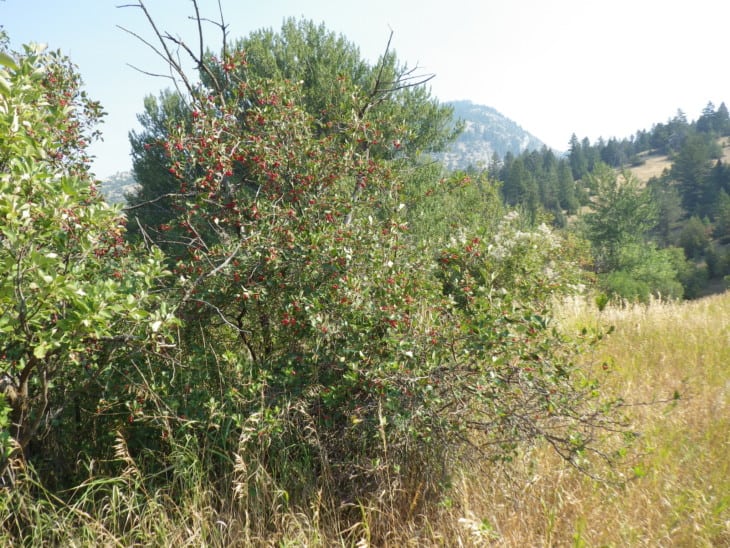
The Dotted Hawthorn is also known as the Goldenberry Thorn, White Thorn and Winterberry. It is a small deciduous tree with an irregular crown; it can reach heights of 15-25 feet tall at maturity. Bark on young stems is smooth and gray in color, becoming dark gray or light brown with age.
28. Bitternut Hickory (carya cordiformis)
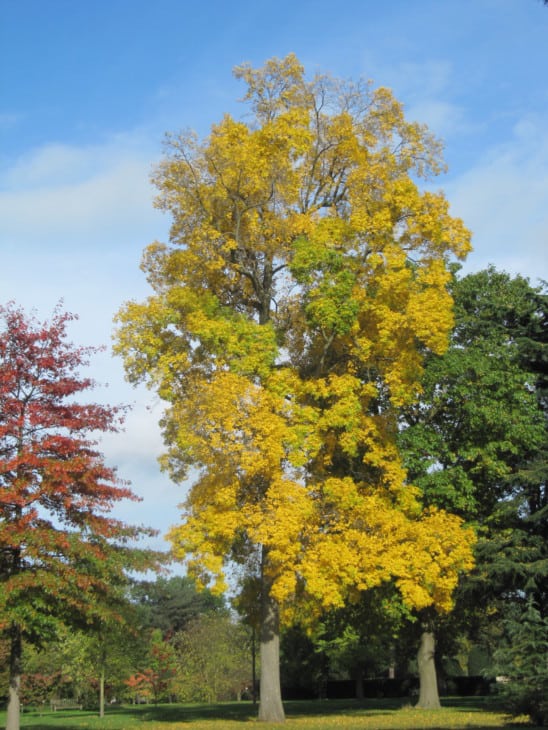
The Bitternut Hickory is also known as the Swamp Hickory, Wabash Nutmeg Hickory and Bullnut Hickory. It is a large deciduous tree with an irregular crown; it can reach heights of 50-75 feet tall at maturity. Bark on young stems is smooth to scaly and light green in color.
29. Downy Serviceberry (amelanchier arborea)
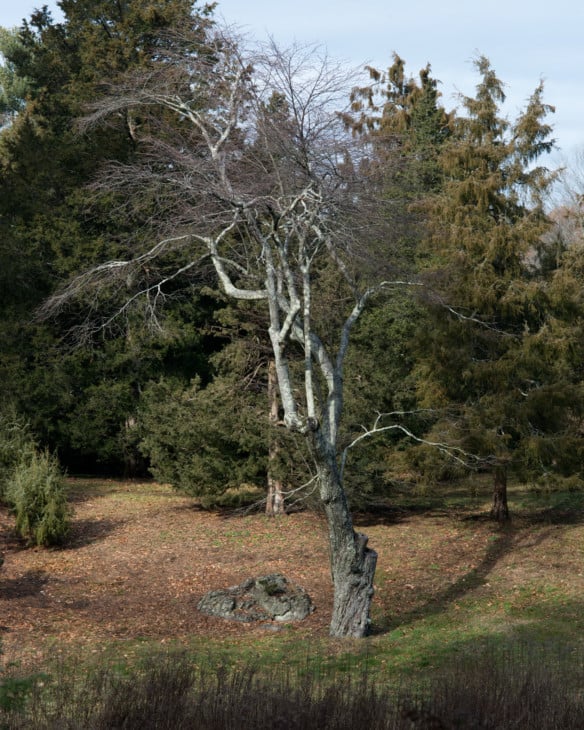
The Downy Serviceberry is also known as Allegheny Serviceberry, Chickasaw Plum and Moose Fruit. It is a small deciduous tree with an irregular crown; it can reach heights of 15-25 feet tall at maturity. Bark on young stems is smooth and greenish gray in color, becoming scaly and dark brown to gray with age.
30. Butternut (juglans cinerea)
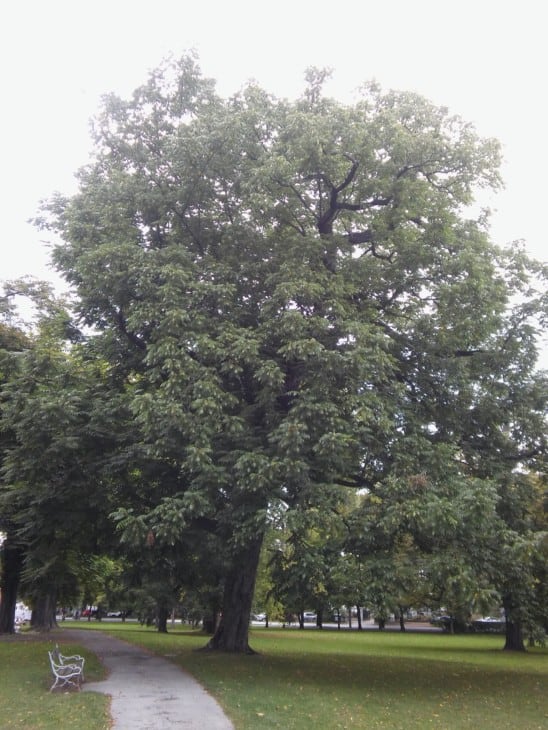
The Butternut is also known as White Walnut, Oilnut and Juglans. It is a large deciduous tree with an irregular crown; it can reach heights of 50-75 feet tall at maturity. Bark on young stems is smooth and greenish brown in color, becoming light gray to dark gray or black with age.

